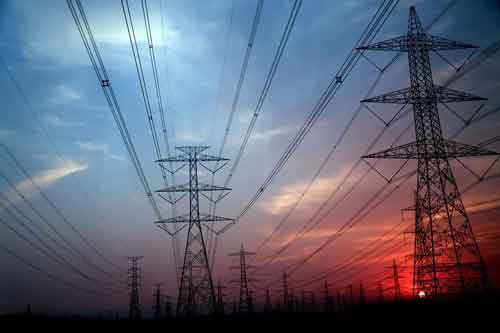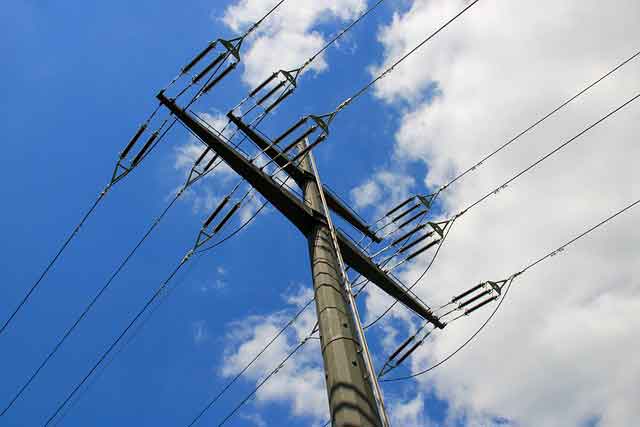US Power Sector Faces Huge Debt In 2003
NEW YORK -- - The US power sector, loaded with a mountain of debt after a massive building spree during the past five years, faces a painful restructuring as the bills come due, affecting not just generators but also lenders, industry analysts say.
During the heyday of electric deregulation in the late 1990s, energy companies borrowed about $500 billion to expand their businesses and build natural gas-fired power plants.
With almost $20 billion due to be paid off or refinanced in 2003, the industry is struggling with an oversupply of generation that has depressed wholesale power prices and further weakened the finances of merchant generators, according to a study by the Fitch credit rating agency.
Because of the heavy debt load, low power prices and expensive natural gas, many new power plants are not returning any cash to their builders, and some are not even generating enough revenue to cover monthly debt payments.
At the same time, the merchant energy sector, created to take advantage of newly deregulated power markets, has been plagued by questionable accounting and trading practices and a loss of investor confidence after a series of credit downgrades following the collapse of Enron Corp. in late 2001.
"The problems are not yet over for the power sector because of the massive debt bubble that needs to be fixed to restore investor confidence in the sector," said Karl Miller, of Miller, McConville & Co., a private firm recently put together by former energy executives and investment bankers seeking to buy distressed generating and natural gas assets.
Many distressed power companies from across the country have resorted to selling assets and taking high interest loans to survive. But such short-term measures will not solve the current problems.
Kansas City's Aquila Inc. recently sold $300 million in assets to avoid defaulting on a bank loan. Detroit's DTE Energy Co. announced in December it would sell its power transmission business to buyout firm DTE Energy Co. Last year, Williams Cos Inc. agreed to a 30 per cent interest rate for a $900 million loan from Lehman Brothers Holdings Inc. and Warren Buffet's Berkshire Hathaway Inc.
Other energy merchants, including Dynegy Inc., Mirant Corp., Reliant Resources and Calpine Corp., have also been forced to refinance debt at high interest rates, though not as high as Williams' desperate move.
A financial restructuring will have to take place -- either in bankruptcy or with lenders out of court -- because the resale value of many plants is well below book value, according to a report by Massachusetts-based CERA energy consultants.
Ultimately, the banks that lent the money to build the plants will suffer from the financial fallout, analysts said.
Most lenders have resisted taking over plants and continue to extend credit and make new loans to keep troubled companies afloat.
"The banks have to recognize the new reality. We want to partner with the banks to restructure the loans and buy the plants at real market prices, allowing the assets to keep generating income for years," said John Burges of Miller, McConville.
For a merchant generator with poor credit, rising debt and dwindling revenues, the sale of a newly built power plant for less than it cost is one of the few options remaining.
Miller, McConville, which does not own any power plants at present but is actively bidding on several projects, estimates there are some 100,000 megawatts of distressed generation in the United States, enough to power about 100 million homes.
"There is a 12- to 24-month window of opportunity to buy distressed plants. Things are likely to get worse during that time as wholesale prices continue to decline before the supply-demand imbalance starts to improve," said Miller.
"The banks want to make sure they get some money out of the plants. They are starting to recognize the debt problem and are beginning to seek solutions. Now is the right time for us to look at these assets," he said.
Related News

Power Outage Disrupts Travel at BWI Airport
WASHINGTON DC - On the morning of March 3, 2025, a major power outage at Baltimore/Washington International Thurgood Marshall Airport (BWI) caused significant disruptions to air travel, affecting both departing and incoming flights. The outage, which began around 7:40 a.m., was caused by a downed power line near the airport, according to officials from Baltimore Gas and Electric Company. Although power was restored by noon, the effects were felt for several hours, resulting in flight delays, diversions, and a temporary disruption to airport operations.
Flight Disruptions and Delays
The outage severely impacted operations at BWI, with more than 150 flights…




